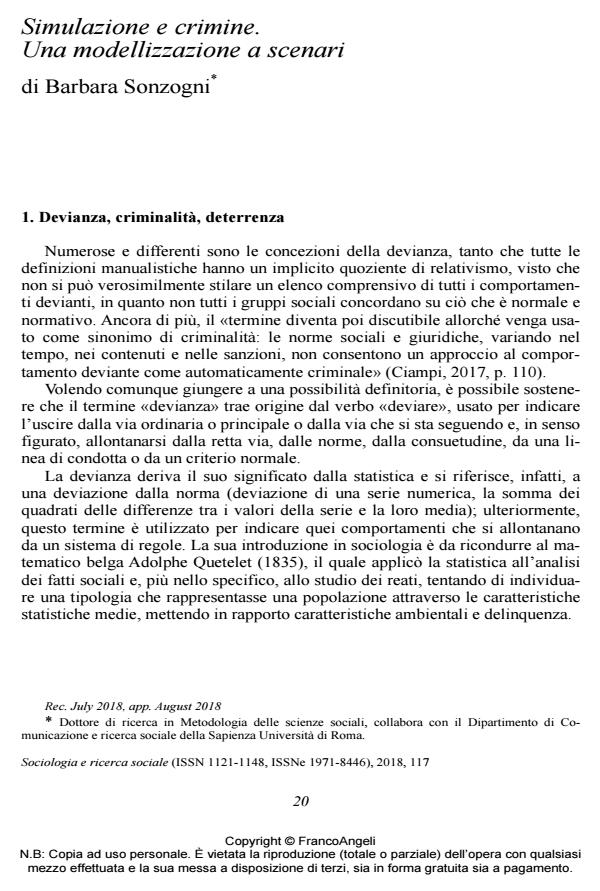Simulazione e crimine. Una modellizzazione a scenari
Titolo Rivista SOCIOLOGIA E RICERCA SOCIALE
Autori/Curatori Barbara Sonzogni
Anno di pubblicazione 2019 Fascicolo 2018/117
Lingua Italiano Numero pagine 25 P. 20-44 Dimensione file 330 KB
DOI 10.3280/SR2018-117002
Il DOI è il codice a barre della proprietà intellettuale: per saperne di più
clicca qui
Qui sotto puoi vedere in anteprima la prima pagina di questo articolo.
Se questo articolo ti interessa, lo puoi acquistare (e scaricare in formato pdf) seguendo le facili indicazioni per acquistare il download credit. Acquista Download Credits per scaricare questo Articolo in formato PDF

FrancoAngeli è membro della Publishers International Linking Association, Inc (PILA)associazione indipendente e non profit per facilitare (attraverso i servizi tecnologici implementati da CrossRef.org) l’accesso degli studiosi ai contenuti digitali nelle pubblicazioni professionali e scientifiche
The use of the first simulative methods in the social sciences dates back to the 1950s and 1960s, but its growth and real diffusion was in the early nineties. This method has however been coupled with traditional methods of research for the study of criminal phenomena only in recent times. Surpassing the traditional statistical technique of logistic regression, this type of model has proved to be suitable for capturing complex and non-linear systems, such as crime. The recent increase of simulative modeling in criminology has led to the creation of numerous models, of which a comprehensive overview is provided.
Barbara Sonzogni, Simulazione e crimine. Una modellizzazione a scenari in "SOCIOLOGIA E RICERCA SOCIALE " 117/2018, pp 20-44, DOI: 10.3280/SR2018-117002